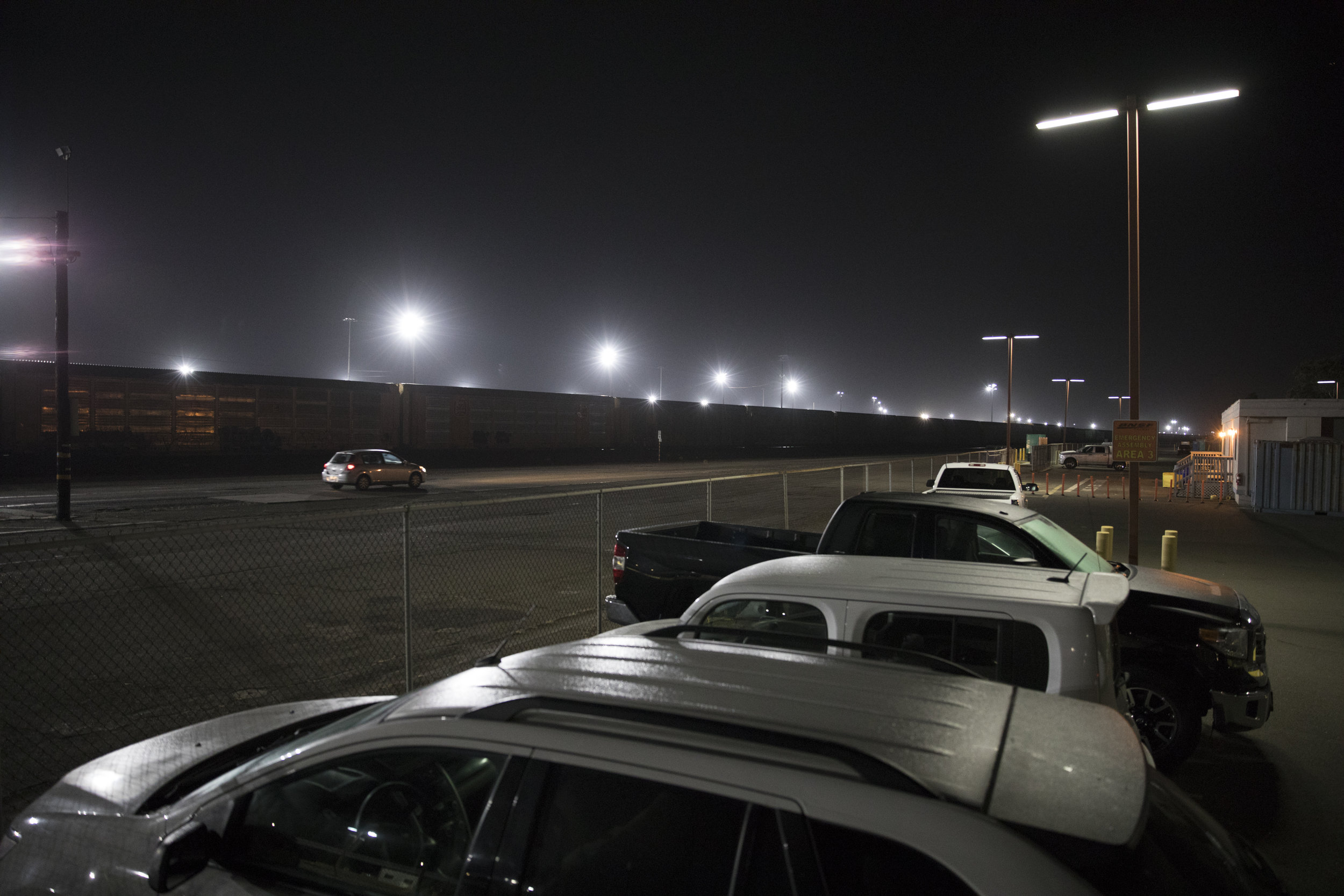The glare of Burlington Northern Santa Fe Railway's newly-installed LEDs seen from a Point Richmond neighborhood half a mile away.
This story is published on Richmond Confidential.
What keeps you up at night? Your response might be personal concerns such as paying off bills and worrying about your kids, but in Richmond, the answer is frequently the light.
“The lights are bright enough you can read a book in my backyard on a dark night,” said Tom Butt, the mayor of Richmond.
During the last six months, several companies, including the Burlington Northern Santa Fe Railway, have installed LED lights in their Richmond properties to save energy and improve visibility for their employees. Although these energy-efficient bulbs help lower cost and reliance on fossil-based fuels, high-intensity LEDs emit blue light that appears white to the naked eye and can be harmful.
In 2016, the American Medical Association released guidelines warning of high-intensity LEDs’ potential harm, such as causing road hazards and sleep problems. “White LED lamps have five times greater impact on circadian sleep rhythms than conventional street lamps,” the guidelines said.
Mayor Butt said he does not have sleep problems caused by the LED lights in the railyard because he sleeps facing the opposite direction from the light source. But many Richmond residents aren’t as lucky.
The city has received hundreds of complaints about light pollution caused by the railway’s newly-installed LED yard lights, city officials said. Some residents shared photo evidence of the glare on Butt’s light pollution post on NextDoor.com. Butt said residents complained about sleep problems, driver safety and the potential for environmental harm for wildlife such as birds.
Although the railway installed 20 shields on its LED yard lights after meeting with the mayor in June, Butt said the change was not visibly significant.
The city’s Director of Planning and Building Richard Mitchell recently sent a notice to the railway asking it to reduce the glare. According to Mitchell, the railway has until September 17 to respond before the city considers further action. That could include another order to abate followed by a $1,000 penalty per day per site.
“We are going to be fighting the property owner in order for them to make the change,” Mitchell said.
Don Maddy, the railway’s executive director of state government affairs responded to the city in a letter last week saying he would be willing to cooperate. But when it comes to the penalty, Maddy wrote, Richmond as a city does not hold jurisdiction on the interstate railway. “The federal Surface Transportation Board(STB) has exclusive jurisdiction over railroad operations and facilities,” he said.
Butt said he understands the federal law’s authority in regulating interstate railways, but he believes the law doesn’t apply to lighting.
“Clearly, in some areas, states and cities have no authority to regulate them, but I think the light thing is questionable,” said Butt, “because the effect is far outside the railroad properties.”
On Friday, Butt held a conference call with the transportation board to write a resolution demanding the railway follow the city’s glare regulation. The city would like the railway to not only shield the LEDs, but lower the height of the light stands to reduce the impact on surrounding neighborhoods.
“The ideal solution would be for them to totally redesign their lighting,” said Butt. “The masts are probably too high and too far apart to meet Richmond’s standards.”

